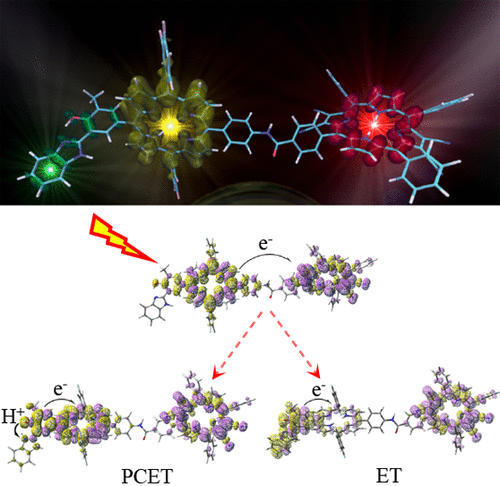Excited State Tracking during the Relaxation of Coordination Compounds
Journal of Computational Chemistry
DOI: 10.1002/jcc.25800
The ability to locate minima on electronic excited states (ESs) potential energy surfaces (PESs) both in the case of bright and dark states is crucial for a full understanding of photochemical reactions. This task has become a standard practice for small- to medium-sized organic chromophores thanks to the constant developments in the field of computational photochemistry. However, this remains a very challenging effort when it comes to the optimization of ESs of transition metal co

mplexes (TMCs), not only due to the presence of several electronic excited states close in energy, but also due to the complex nature of the excited states involved. In this article, we present a simple yet powerful method to follow an excited state of interest during a structural optimization in the case of TMC, based on the use of a compact hole-particle representation of the electronic transition, namely the natural transition orbitals (NTOs). State tracking using NTOs is unambiguously accomplished by computing the mono-electronic wavefunction overlap between consecutive steps of the optimization. Here, we demonstrate that this simple but robust procedure works not only in the case of the cytosine but also in the case of the ES optimization of a ruthenium-nitrosyl complex which is very problematic with standard approaches.




